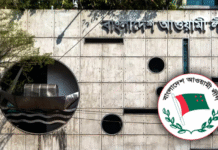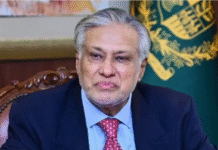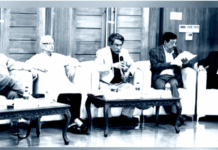Something strange is happening in the capital’s slums — Covid-19 cases are hard to come by.
When the pandemic first hit, the 20-odd slums in the city were feared to become virus hubs. Apart from high density of the population, shared kitchens, toilets, communal water sources, one room per family living arrangements, open sewers, non-existent waste disposal systems, and the slum residents’ overall economic vulnerabilities made them the most vulnerable.
More than four months later, no reliable data, however, can be found to determine whether coronavirus has wreaked havoc on the slums.
The Daily Star correspondents visited seven slums of Korail, Chalantika, Bhashantek, Bauniabandh, Abuler Basti and Lalashorai recently and found residents saying the same thing time and again: There are no Covid-19 cases here.
“There have been no coronavirus patients in this slum. This is a rich man’s disease,” said one in Korail Basti early this month. Other slum dwellers made this claim so repeatedly that it was frankly, flummoxing.
Forty-year-old daily wage earner Kamrunnahar, who lives in the slum, said she did not find it necessary to wear a mask since “there was no coronavirus” case there.
“I need to think about what to eat at night, I can’t worry about masks,” said the woman, who used to work as a domestic help, but became unemployed in the coronavirus fallout.
Councillor of Ward-19 Mofizur Rahman echoed the thoughts of the slum residents, saying, “The rate of infection is very low here.”
Talking to The Daily Star on July 21, Meerjady Sabrina Flora, director of Institute of Epidemiology, Disease Control and Research (IEDCR), made a similar observation.
“We are undertaking a survey on the slums in the capital and we are not seeing the infection rate to be high,” she said.
Geospatially, this is confusing. Chalantika, Bhashantek, and Bauniabandh, for example, are all in Mirpur, which consistently has had the highest number of Covid-19 cases in the city.
Similarly, Korail is located in Mohakhali, which is also one of the most infected areas.
But perhaps what is more confusing is that there are decades of compelling scientific evidence pointing out that slum residents are more vulnerable to illnesses.
For example, in 2017, Bangladesh Institute of Development Studies did an extensive survey on 800 households in slums, and found several factors that should point towards higher morbidity.
The survey report, titled “Burden of Disease on the Urban Poor: A Study of Morbidity and Utilisation of Healthcare among Slum Dwellers in Dhaka City”, found that a vast majority of the slum population did not use soap for washing hands.
Eighty-five percent of the respondents said they wash their hands with only water or mud/ash after defecation. While a tiny minority used soap after their own defecation, almost nobody washed hands with soap after cleaning their children’s excretion, according to the report.
Meanwhile, only 18 percent of slum residents reported consistently using footwear while using the toilet. This is in spite of the fact that all the households share toilets, with an average of 12 and a maximum of 25 households sharing one toilet.
About 38 percent of the toilets used were makeshift bamboo and polythene structures, erected over a canal or a skip. Only a fifth of the households used toilets linked to the sewerage system, or with a water-sealed ring slab.
More than half drank water straight from shared public taps, found the survey.
Do these have an effect on their health? The report found that it does — 95.4 percent of the households reported having experienced illness in the past month. For a control group of non-slum households, this figure was 87.4 percent, showing the slum residents get sicker. More than half of the slum households experiencing illnesses had fever, cold and other respiratory illnesses.
Then how could Covid-19 apparently gloss over these people-packed urban pockets?
“While we don’t have any study results yet, one reason could be the fact that there are some open spaces inside slums,” mused Dr Flora, “but we can’t say anything concrete until the survey results are finalised.”
Interviews of slum dwellers taken by The Daily Star anecdotally raise questions about whether Covid-19 is not being found, because slums are not being tested.
Babu fell sick, along with his entire family, soon after a coronavirus-driven lockdown was imposed, but did not get tested. An owner of a mobile phone recharging booth in Korail’s Babubazar slum, Babu was the first to become sick with the flu in his home. He was suffering for two weeks, when his three and eight-year-old sons went down with the flu as well. They each suffered between 20 days and one and a half months.
Asked why Babu did not get tested for Covid-19, he said, “Why would I? There is no coronavirus in the slums. Besides I don’t know where to get tested. I don’t have the money for treatment either, so why bother!” he said.
Pran Krishna Dey, proprietor of a pharmaceutical store in Bhashantek, said he was selling flu medication in droves, but none of the residents ever sought to be tested, nor did he advised anyone to do so.
“We don’t know whether we have coronavirus in this slum or not,” he said.
A similar view was expressed by owners and employees of several drug stores near Chalantika and other slums.
Meanwhile, the muezzin of Baitul Nur Jame Masjid at Chalantika said when an old man died all of a sudden in the slum three weeks back, he was not tested for Covid-19.
“People said he died of old age, so there was no need for any test,” said the muezzin.
Asked, Prof Nasima Sultana, additional director general of the DGHS, said there has been no dedicated testing in the slums. “We usually don’t see the poorest show up at hospitals for testing either,” she said.
Shipra Rani Mridha, a Brac Shashtya Karmi, said misinformation and stigma appeared to be a real challenge in the slums. “Many families I work with lack the education, awareness and income to tackle the Covid-19 crisis. They are also scared, because people have a negative perception towards people infected with coronavirus. They do not want to give out information related to their health, even if they are suffering from an illness.
“I have been a community health worker for four years now. I have never seen such fear and resistance in the community before.
“I collected the names of a few people in the area who had fever, in order to arrange appropriate support for them. Many of their family members showed up at my doorstep soon after, and begged me not to share their details with anyone. They were afraid that they would be treated as outcasts, or ‘arrested’ by the police. Some said they heard people are killed during quarantine. When I tried to talk to them to remove this misconception, some people became aggressive and desperate to strike their names off the list. It was scary.”
Back in May, Brac’s James P Grant School of Public Health did a rapid research in slums and found that people showing Covid-19 symptoms were being harassed to leave.
“Individuals are worried about being ostracised within the community, and being accused of infecting others and spreading it in the settlements,” said Prof Sabina Faiz Rashid, dean of the institute, and one of the authors of the research.
A couple of months have gone by since then, has the situation really changed?










